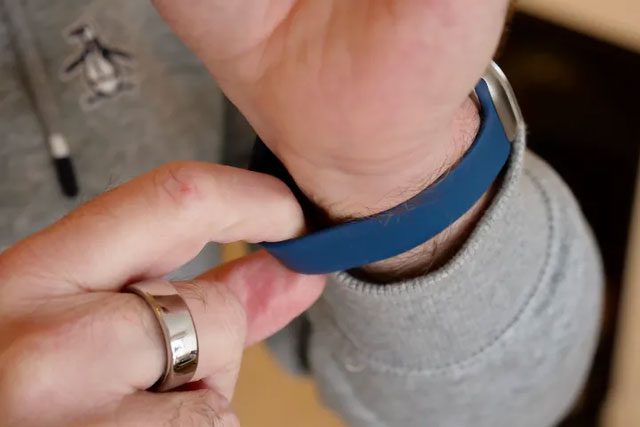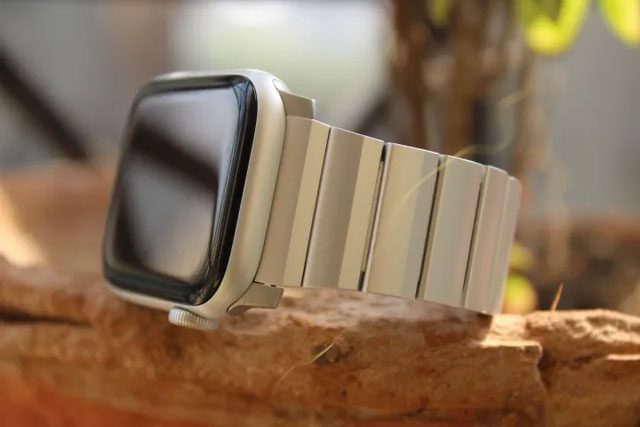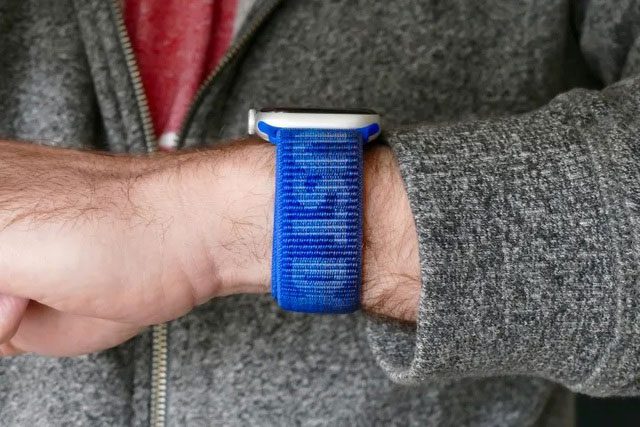Smartwatches are useful devices for daily activities, but many people are unaware that they also hide a disturbing truth.
The Disturbing Reality You Carry on Your Smartwatch
As smartphones have become a popular trend over the past decade, numerous studies have shown that the devices we hold daily are far from clean. Research from Arizona State University indicates that smartphones can be ten times dirtier than a toilet seat.
However, over the years, another type of personal device has been recorded as even “dirtier” than phones. These are health-tracking wearables like smartwatches and fitness bands.
Researchers at the Charles E. Schmidt College of Science at Florida Atlantic University studied various types of wristbands and found that nearly 95% of them were contaminated with different forms of bacteria.

Health tracking devices like smartwatches are dirtier than we think.
Among these, materials made from rubber and plastic were found to have the highest levels of contamination, while metal bands like gold and silver showed the lowest bacterial activity.
The study published in the journal Advances in Infectious Diseases noted that the amount of bacteria could vary depending on an individual’s gender and occupation.
The team meticulously analyzed wristbands made from rubber, plastic, fabric, leather, and metal from individuals in various professions such as firefighting, office work, driving, and veterinary fields.
While the type of work does influence the level of pathogens, the most crucial aspect is the surface and texture of the bands. For instance, people who exercise and veterinary professionals had the highest density of pathogenic bacteria living on the surface of their bands.

Individuals exercising and veterinary professionals have the highest density of pathogenic bacteria.
So what about wristbands with antibacterial properties?
“This is a double-edged sword.” Nwadiuto Esiobu, a senior researcher at Florida Atlantic University, told Digital Trends that anything antibacterial will have a short-term killing effect but will also “train” bacteria to become “resistant.”
A Breeding Ground for Dangerous Pathogens
During testing, the research team found that Staphylococci, Pseudomonads, and Enterobacteriaceae were the most common pathogens living on the wristbands.
The first name on the list is an opportunistic pathogen that causes bloodstream infections, leading to $2 billion in healthcare costs annually in the United States.
Another strain discovered during testing is Staphylococcus aureus, which can cause blood clotting, infective endocarditis, and organ failure resulting in death.
Overall, the highest density of Staphylococcus was found on plastic bands, followed by fabric, rubber, and leather bands. In general, metal bands, such as those made from silver and gold, “have very little or no bacteria.”
Another dangerous pathogen found thriving on rubber and plastic bands is Pseudomonas aeruginosa, known to cause urinary tract infections (UTIs).
The most concerning discovery was the identification of Enterobacteria – specifically Escherichia coli, a type of bacteria associated with oral infections and primarily found on plastic and rubber bands.

The surfaces of rubber and plastic bands tend to be easy targets for pathogens.
The study speculates that “porous and static surfaces,” such as those of rubber and plastic bands, tend to become easy breeding grounds for pathogens. In contrast, metal is considered a relatively safer option.
“Metal inhibits enzymes on bacterial membranes… Thus, most bacteria that exist for a long time will die off over time,” Esiobu explains about the safety that metal surfaces provide.
Currently, metal bands are often slightly more expensive than common types but are worth it for the safety they offer.
How to Safely Clean Your Smartwatch Band
The research team tested three types of cleaners – Lysol disinfectant spray, 70% ethanol, and apple cider vinegar. Notably, the Lysol solution and ethanol only required 30 seconds of contact to significantly reduce the number of bacteria, while apple cider vinegar needed 2 minutes to do the job.
The bands sold by Samsung and Apple for smartwatches are made from leather, fluoroelastomer, stainless steel, silicone, thermoplastic, polyurethane, woven nylon, polyester fiber, and fluorocarbon rubber.
Depending on the material of the band, you may need to adjust the type of cleaning solution to achieve the best results while avoiding the risk of damage.
Both companies recommend users clean their wearables after exercising or engaging in any form of sweaty activity.

Another sign that it’s time to clean the band is odor.
Apple suggests using 70% isopropyl alcohol wipes, 75% ethyl alcohol wipes, or Clorox disinfecting wipes to clean certain types of bands such as the Sport band, Ocean band, or Solo Loop band.
Another sign that it’s time to clean the band is odor. “Odor is really a byproduct of bacterial fermentation. The oil that humans secrete has no smell,” Esiobu states.
Quick wiping with nail polish remover, quaternary ammonium soap, and lemon juice are some easy household methods that can help prevent the growth of pathogens to some extent.
However, this method may lead to discoloration on certain types of bands, so users should use it cautiously.
Users are also advised to avoid anything containing bleach or strong chemicals like hydrogen peroxide.
If no cleaning chemicals are available, household items such as apple cider vinegar are sufficient. Just ensure you soak the dirty bands in vinegar for at least 2 minutes to effectively eliminate bacteria.


















































